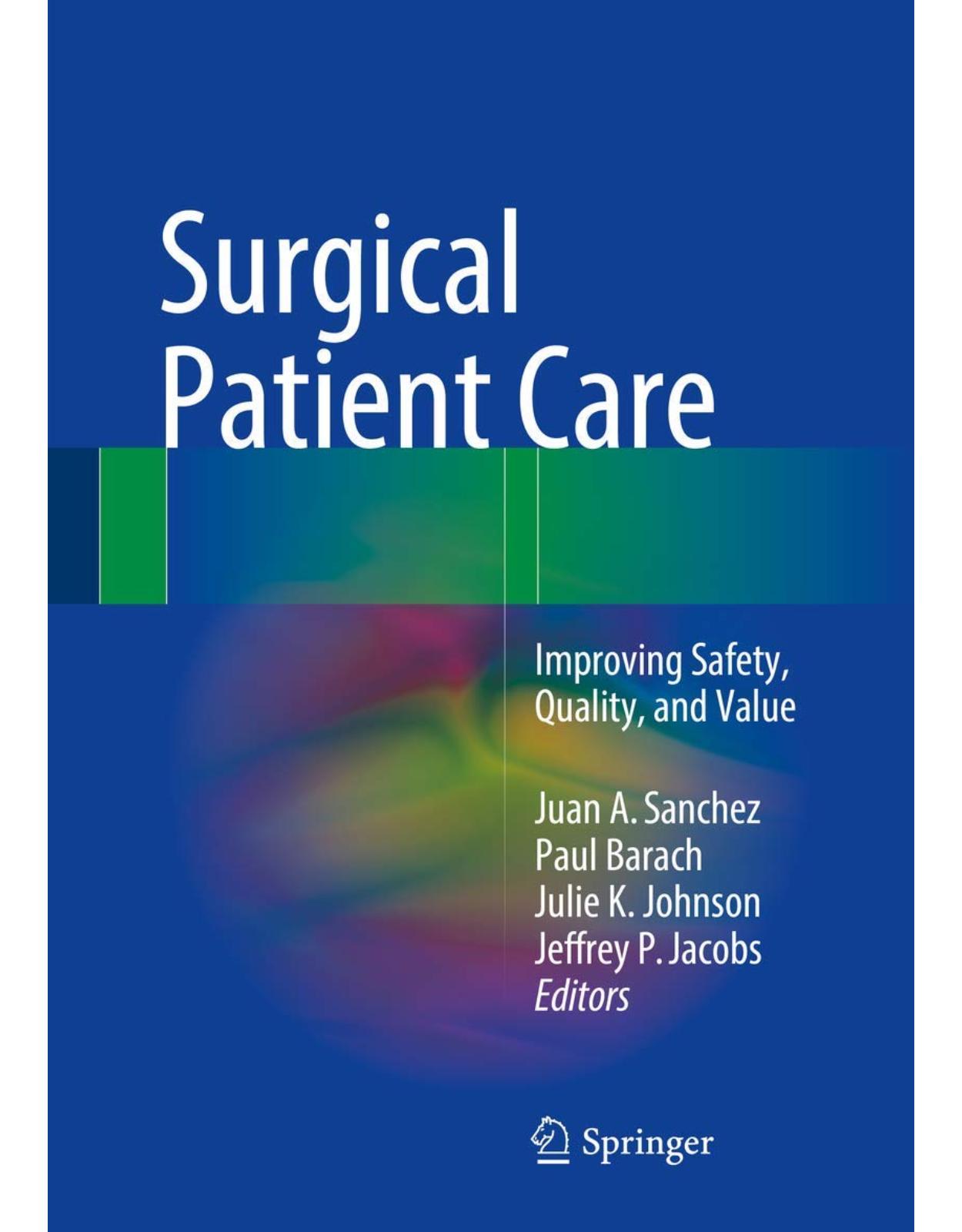
Surgical Patient Care: Improving Safety, Quality and Value
Livrare gratis la comenzi peste 500 RON. Pentru celelalte comenzi livrarea este 20 RON.
Disponibilitate: La comanda in aproximativ 4 saptamani
Autor: Juan A. Sanchez
Editura: Springer
Limba: Engleza
Nr. pagini: 909
Coperta: Hardcover
Dimensiuni: 17.15 x 5.72 x 26.04 cm
An aparitie: 8 Jun. 2017
Description:
This book focuses exclusively on the surgical patient and on the perioperative environment with its unique socio-technical and cultural issues. It covers preoperative, intraoperative, and postoperative processes and decision making and explores both sharp-end and latent factors contributing to harm and poor quality outcomes. It is intended to be a resource for all healthcare practitioners that interact with the surgical patient. This book provides a framework for understanding and addressing many of the organizational, technical, and cultural aspects of care to one of the most vulnerable patients in the system, the surgical patient. The first section presents foundational principles of safety science and related social science. The second exposes barriers to achieving optimal surgical outcomes and details the various errors and events that occur in the perioperative environment. The third section contains prescriptive and proactive tools and ways to eliminate errors and harm. The final section focuses on developing continuous quality improvement programs with an emphasis on safety and reliability. Surgical Patient Care: Improving Safety, Quality and Value targets an international audience which includes all hospital, ambulatory and clinic-based operating room personnel as well as healthcare administrators and managers, directors of risk management and patient safety, health services researchers, and individuals in higher education in the health professions. It is intended to provide both fundamental knowledge and practical information for those at the front line of patient care. The increasing interest in patient safety worldwide makes this a timely global topic. As such, the content is written for an international audience and contains materials from leading international authors who have implemented many successful programs.
Table of Contents:
Part I: Fundamentals of Systems and Safety Science
1: The Burning Platform: Improving Surgical Quality and Keeping Patients Safe
Introduction
Threats to Patient Safety
Avoidable Errors
Variation
Overuse
Underuse
Disparities in Surgical Care
Measuring Surgical Quality
Conclusions
References
2: Risk Factors and Epidemiology of Surgical Safety
A Framework to Study Errors and Harm
The Scale of Harm in Surgery
Solutions to Prevent Errors and Harm in the Perioperative Arena
Surveillance and Monitoring of Surgical Safety
References
3: Concepts and Models of Safety, Resilience, and Reliability
Introduction
Normal Accident Theory
Complexity Science
Safety Drift and Procedural Violations
Safety Drift
Features of Drift
Possible Means to Reduce Potential for Drift
Procedural Violations
Stretching the Limits of Adaptive Capacity
Resilience
Four Pillars of Resilience
Limitations of Resilience
Principles of High Reliability
Concept and Characteristics of High Reliability
Common Characteristics of High Reliability
Different Characteristics
Limitations
Surgical Microsystems
Characteristics of Surgical Microsystems
Conclusions
References
4: Surgery Through a Human Factors and Ergonomics Lens
Introduction
Humans and Automation
Human Factors in Device Design
Cognition in Context
Performance-Shaping Factors
Summary
References
5: The Relationship Between Teamwork and Patient Safety
Introduction
Defining Teams, Teamwork, and Multi-Team Systems
Models of Teams and Teamwork
Healthcare Specific Models
Practical Principles for Effective Teaming in Surgery
Membership and Team Life Span Considerations
Interventions to Develop and Support Effective Teaming in Surgery
Conclusions
References
6: Enterprise Risk Management in Healthcare
Overview of Enterprise Risk Management
Principles of Risk Management
Risk Management in Healthcare Organizations
Identifying Risk
Measuring Risk
Culture
Avoiding a Culture of Fear
Defining a Culture of Prevention
Role of the Chief Risk Officer
Medicolegal Aspects of Patient Safety
Information Technology/Security/HIPAA
Understanding Health Information Privacy
Entities and Business Associates
Office for Civil Rights Pilot Privacy, Security, and Breach Notification Audit Program
Case 1: A Children’s Hospital Fined $40,000 for Data Breach
Case 2: Academic Medical Center Fined $1,500,000 for Deficiencies in HIPAA Compliance Program
How the OCR Enforces the HIPAA Privacy and Security Rules
Security Risk Assessment
Business Associates and Risk Assessments
Common CMS Audit Findings
Policies and Procedures: Problem Areas
The Evolving Role of the Risk Manager
Formal Risk Reporting and Risk Data Management
Patient Safety and Quality Improvement Act of 2005 Statute and Rule
Understanding Patient Safety Confidentiality
Common Formats
Report Types from the NPSD
Value to Providers
Patient Safety Evaluation System
Reporting Preventable Errors or Preventing Preventable Errors?
Event Underreporting
Federally Listed Patient Safety Organizations
Summary
References
7: The Patient Experience: An Essential Component of High-Value Care and Service
What Is High-Value Care?
What Is the Patient’s Role in High-Value Care?
Shared Decision Making
Decision Aids
Barriers to Shared Decision Making and Value-Based Care
How Do We Measure Quality?
Patient-Reported Outcomes
Patient Experience of Care
Measuring Quality in Surgical Care
References
8: Patients and Families as Coproducers of Safe and Reliable Outcomes
Introduction
Co-commissioning
Codesigning
Co-delivery
Co-assessment
The Bigger Picture
References
9: Tools and Strategies for Continuous Quality Improvement and Patient Safety
A History of Quality Improvement
Approaches to Quality Improvement
Quality Improvement Tools
Checklists
Process Maps
Ishikawa Diagrams
Run Charts and Control Charts
Conclusions
References
10: The Future and Challenges of Surgical Technology Implementation and Patient Safety
The Current State of Robotic Surgery
Endoluminal Surgery and NOTES
Telesurgery and Telementoring
The Future of the Operating Room
Tissue Engineering
Immunotherapy in Surgery
References
Part II: Job and Organizational Design
11: Organizational and Cultural Determinants of Surgical Safety
Introduction
Open System Assumptions
Safety in Health Care: The Role of Organizing Processes
Two Approaches to Safety Management
Organizational Determinants and Safe Outcomes: Some Evidence
Safety in Health Care: The Role of Culture and Climate
How Does Culture Control and Develop?
Safety Culture and Outcomes: Some Evidence
Implications
Conclusion
References
12: The Role of Architecture and Physical Environment in Hospital Safety Design
Introduction
A Little History and Modern-Day Statistics (Figs. 12.1 and 12.2)
The Surgical Suite
Program Building Blocks
Surgical Suite Organization and Design
Suite Layouts
New Layouts and Flow
Suite Layout Characteristics
Public Areas
Preoperative Areas
Operating Rooms
Operating Room Size
Communications in the OR
Universal ORs
Planning for Change
Postanesthesia Care Unit
Phase 2 Recovery
Physician and Staff Support Areas
The Details: Design Thinking, Processes
Understanding the Needs of the Patient
Understanding the Needs of the Perioperative team
Lean Design
Working Definitions
Preoperative Phase: Opportunity for Enhanced Communication
Multiple Points of Entry: Designing for Safety, Efficiency, and Comfort
Interior Architecture and Design Considerations
Patient Safety
Patient Experience
Interior Specifications to Facilitate Optimal Human Performance
Opportunities for Efficiency, Patient Safety, and Patient Experience in Pre-op, Prep/Hold
Intraoperative Phase
The Details of Human Performance
The Complex Workspace of Surgical and Anesthesia Service
Observing for Errors and System Factors
Lighting and Performance
Human Needs
Interior Architecture and Design
Postoperative Phase
Patient Well-Being and Family Satisfaction
Form Follows Safe Surgical Function
Key Steps for Pre-design
References
13: Building Surgical Expertise Through the Science of Continuous Learning and Training
Learning and Expert Decision Making
Characteristics of Expertise and Expert Behavior
Learning Within the Surgical Microsystem
Learning at Various Stages of Training/Levels of Expertise
Recruiting and Training the Surgical Team
Training the Surgical Team
Assessing Expertise
Technical Skills
Nontechnical Skills
Entrustable Professional Activities
Future Directions
References
14: Promoting Occupational Wellness and Combating Professional Burnout in the Surgical Workforce
Burnout and Distress
Wellness
Research Behind Wellness
Integration and the Window of Tolerance
Mechanical vs. Complex Adaptive Systems
The Healthy Mind Platter
Sleep Time
Play Time
Downtime
Time-In (Reflection, Attunement, Mindfulness)
Connecting Time
Physical Time
Focus Time
Additional Wellness Tips
Release Yourself and Others from Unnecessary Judgements
Embrace Joy and Gratitude
Photographic Proof
References
15: Executive Leadership and Surgical Quality: A Guide for Senior Hospital Leaders
Introduction
Role and Responsibilities for Successful Oversight
Who is the Chief Surgical Quality and Patient Safety Officer?
Training and Resources Required for Success
Reporting Structure and Administrative Committee Support
Strategic Alignment and Leadership
Resources and Relationships Critical to Success
Developing a Culture of Safety and High Reliability at All Levels
Data Analytics and Validation
Metric Development and Goal Setting
Continuous Improvement Training and Support
Innovation in Process Improvement: Engaging the Team
Performance Management and Accountability
Managing the Tension Between Quality, Efficiency, and Patient Satisfaction
Dash Boarding and Bench Marking for Surgeons and Departments
Incentives and Compensation Aligned with Outcomes
Future Leadership in Value-Based Care
Academic Development of Administrative Roles and Outcome Researchers
Succession Planning for Quality Leaders
Key Points
References
16: Information Technology Infrastructure, Management, and Implementation: The Rise of the Emerg
Introduction
The Three Level Hierarchy Paradigm for Healthcare HIT
An Integrated Architecture for HIT Usability
System Adaptability
Immediate Adaptability (IA)
Objections to Immediate Adaptability (IA)
Functional Specifications of IA Clinical Information Systems
A Generic Architecture for IA-CIS: Repurposing the EMR Model
An Architecture That Supports the Levels of HIT Context
The Architecture in Practice: Clinical Care Information Systems (CCIS) and Clinical Services Infor
Case Study Results
Conclusions and Some Observations About the Future of HIT
References
17: Redesigning Hospital Alarms for Reliable and Safe Care
Introduction
The Detrimental Impact of Noise and Alarms on Patients and Providers
Characteristics of Systems and Risk Management Framework
Human Factors and Situation Awareness in Understanding Optimal Alarm Management
Medical Device Features
Source–Path–Receiver Model
The Role of Alarm Standards and Codes
The Role of Medical Device Designers and Manufacturers
Advocating for Change to Improve Alarm Management (Fig. 17.2)
Organizational Environment: The Role of Clinical Microsystems in Addressing Alarms
Guiding Principles in Alarm Management
Conclusions
References
18: Implementation Science: Translating Research into Practice for Sustained Impact
What is Implementation Science?
Implementation Frameworks
The Exploration, Preparation, Implementation Sustainment (EPIS)
Implementation Outcomes
Consideration of Organizational Context in Implementation
Implementation of Surgical Checklists
Early Support for Implementation of Surgical Checklists
Fading Evidence for Implementation of Surgical Checklists
Incomplete Plan for Implementation of Surgical Checklists
Summary and Challenges and Future Directions for Implementation Science Research
Future Directions and Global Initiatives for the Field of Implementation Science
Conclusion
References
Part III: Perioperative Quality and Patient Safety
19: The Leadership Role: Designing Perioperative Surgical Services for Safety and Efficiency
Introduction
Building a Safety Culture
Designing the Infrastructure for Safety
Hiring for Safety
Promoting Safety Norms
The Role of the Operating Room Management Committee
Collaborating for Safety
Executive Leadership
The Information Technology Department
Quality, Safety, and Risk Management Departments
Other Departments
External Partners
Staffing for Safety
Staffing Plan
Educating and Training in Patient Safety
Simulation
Spaced Education
Designing Processes for Safety
Presenting a Business Case for Safety
Sources of Data
Minimizing and Managing Resistance
Engage Emotionally
Maximize Efficiency
Leverage Peer Pressure and Support
Audit and Feedback
Dealing with Persistent Resistance
Summary
References
20: Operating Room Management, Measures of OR Efficiency, and Cost-Effectiveness
Introduction
Basic Definitions [1–4]
Case Duration Predictions
How to Make Duration Predictions
Improving Duration Predictions
OR Block Time and Utilization
Surgeon Block Time
Block Time Allocation
Block Time Utilization
Case Scheduling
Impact of High Utilization
OR Decision-Making
Utilization-Based Decisions
Decision-Making Priorities
Staffing
Managing Staff
OR Efficiency
Calculating Efficiency
Goals of Efficiency
Measures of OR Efficiency
Table 20.3 Discussion
Case Cancellations
PACU Delays
OR Summary Data
Conclusion
References
21: The Science of Delivering Safe and Reliable Anesthesia Care
Introduction
Designing and Enabling a Culture and Climate of Safety
Equipment and Monitoring Advances
Anesthesia Information Management Systems
Medication Safety
Preventing Medication Errors
Closed Claims Analysis and Associated Anesthesia Registries
Checklists and Cognitive Aids
Checklists
Cognitive Aids
Patient Transitions and Handoffs
Teams Training, Crisis Resource Management, and the Role of Simulation
Perioperative Safety Organizations
Caring for the Provider
Human Factors and Their Impact on Performance
The Second Victim
The Future: Coordination of Care and the Perioperative Surgical Home
Conclusions
References
22: Enhanced Recovery After Surgery: ERAS
Background
The ERAS Protocol: Individual Items
Preoperative Optimization
Prehabilitation and Exercise
Smoking and Alcohol Cessation
Preoperative Information, Education, and Counseling
Intraoperative Care
Preoperative Fasting and Preoperative Treatment with Carbohydrates
Antimicrobial Prophylaxis and Skin Preparation
Preanesthetic Medication and Anesthetic Management
Perioperative Fluid Balance
Avoiding Hypothermia
Access
Nasogastric Tube and Abdominal Drains
Urinary Catheter
Postoperative Care
Postoperative Analgesia
Postoperative Nausea and Vomiting (PONV)
Antithrombotic Prophylaxis
Early and Scheduled Mobilization
Early Oral Intake and Stimulation of Bowel Movement
Discharge
Audit
Implementation of an ERAS Program
Economics of ERAS
Research Outcomes and Quality of Life
References
23: The Next Frontier: Ambulatory and Outpatient Surgical Safety and Quality
Introduction and Overview
Factors That Drive a Culture of Safety in an ASC
Quality Assessment Performance Improvement
Risk Management
Environmental and Patient Safety
Infection Control and Prevention
Conclusion
References
24: Human Factors and Operating Room Design Challenges
Operating Rooms as Socio-technical Environments
Diffusion of Innovation
Risks in the Operating Room
Case Study I: Effects of Operating Floor Marking on the Position of Surgical Devices
Floor Marking Effects
Marking Floors as Improvement Design Intervention
Case Study II: Video Feedback to Improve Sensomotor and Non-technical Skills
Sensomotor and Non-technical Factors in the Operating Room
Video Feedback as Means for Improvement
Awareness of Risks
Aversion to Error Reporting
Social Orientation
Automated Versus Handheld Video Feedback
Preliminary Results in Cataract Surgery
Computer-Assisted Surgical Systems
Recommendations�
Safety and Quality Improvement in the Operating Theatre Are Not Single Treatment Interventions B
Diffusion and Learning in Professional Organizations
Health Care Teamwork Is Work in Progress
Learning from Others
Conclusions
References
25: Diagnostic Error in Surgery and Surgical Services
Introduction
The Incidence of Diagnostic Error in Surgery
The Etiology of Diagnostic Error in Surgery
Addressing Diagnostic Error in Surgery
Addressing Interpretive Diagnostic Error in Surgical Pathology and Cytology
Addressing Cognitive Errors
Addressing System-Related Errors
The Future Reliability and Assurance of Surgical Diagnosis
References
26: Preventing Perioperative ‘Never Events’
Introduction
Misidentification (Wrong Patient/Procedure/Site)
Medication Errors
Pressure Ulcers and Related Positioning Never Events
Surgical Site Infections
Electrical and Other Energy-Related Never Events
Retained Surgical Items
Device Failures and Misuse
Difficult Airway, Failed Airway, Air Embolus
Difficult Airway
Failed Airway
Air Embolus
Venous Air Embolus
Arterial Air Embolus
Surgical Specimen Never Events
Hypothermia
Instrument Care and Reprocessing Never Events
Conclusions
References
27: Healthcare-Associated Infections in Surgical Practice
Introduction
Catheter-Associated Urinary Tract Infection (CAUTI)
Prevention
Catheter-Related Bloodstream Infection
Prevention
Surgical Site Infections (SSI)
Prevention
Pneumonia
Prevention
Clostridium difficile Infection
Prevention
Conclusions
References
28: Safer Medication Administration Through Design and Ergonomics
Part I: Introduction
Patient Story
Case Commentary
When to Suspect Wrong Drug Administration in the Operating Room
Clinical Management of Apnea
Medication Errors in Operating Room
System Theory and System Checks to Prevent Wrong Drug Administration
Part II: Organizational Medication Safety Management and Procurement
Formulary Management
Controlled Drug Management
Safe Medication Management Education
Drug Procurement
Injection Practices
Compounding Pharmacy Selection�
Drug Recalls
Drug Defect Reporting
Clarity of the Medical Record
Role of the Pharmacy Consultant
Pharmacy and Medication Safety Committees
Emergency Preparedness
Additional Resources
Conclusions
Appendix 1: Contract Pharmacy and Medication Management Consultation Services
References
29: Preventing Venous Thromboembolism Across the Surgical Care Continuum
Background
Definitions
Incidence and Cost
Harm to Patients
Risk Factors
Prevention
Pharmacologic Prophylaxis
Mechanical Prophylaxis
Prophylactic Inferior Vena Cava Filters
Systems of Care to Improve Prevention
VTE Risk Assessment and Prescription of Prophylaxis
Administration of VTE Prophylaxis
Patient Engagement and Education
Overcoming Hospital Culture Obstacles
Public Reporting of VTE Outcomes
Screening of Asymptomatic Patients and Surveillance Bias
Linking Process Measures and Outcome Measures
Quality and Safety Aspects of Diagnosis and Treatment
Conclusions
Key Points
References
30: Preventing Perioperative Positioning and Equipment Injuries
Introduction
Anatomy and Physiology
Risk Factors
Positioning Equipment
Equipment and Positioning Injuries
Preoperative Assessment
Skin Assessment
Surgical Positions: Safety Considerations
Supine Position
Trendelenburg Position
Modifiable Risk Factors and Prevention
Patient Factors
Padding
Positioning Devices
Team Communication
Prone Position
Lithotomy Position
Lateral Position
Positioning the Obese Patient
Safety Considerations
Conclusion
References
31: Challenges in Preventing Electrical, Thermal, and Radiation Injuries
Introduction
Background
Etiologies of Intraoperative Tissue Injury
Histology and Etiology
Investigation Guidelines for Perioperative Skin and Tissue Injuries
Injury Prevention and Management: Pre- and Post-Operative Considerations
Finding an Injury
Incident Report Documentation
Patient and Family Discussion
Components of a Thorough Investigation
The Investigation Process
The Investigation Team
Identifying the Cause
The Investigation Format
Lesion Assessment
Baseline Information
Lesion Assessment
Equipment Inspection
Using the Investigation Questionnaire
Instructions
Electrosurgical and Electrocautery Technology
Electrosurgery vs. Electrocautery: Untangling the Terminology
Electrosurgical Units (ESUs) and Accessories: Overview
The Clinical Knowledge Base About Electrosurgery
Nerve Monitoring Units and Electrosurgery
Direct Current Injury
Handling Electrodes During Investigations
Endoscopes and Laparoscopes
Thermal Injuries
Hypo/Hyperthermia Units
Hyperthermia Pads
Hypothermia Pads
Forced Air Hyperthermia Blankets
Phacoemulsifiers
Pulse Oximeters
Irradiant and Other Heat Sources
Radiant Warmers
Blanket and Solution Warming Cabinets
Fluoroscopy
MR Imaging
Thermal Injury from Surgical Fires
Summary
Appendix 1: Questionnaire for Investigating Accidental Perioperative Skin or Tissue Injury [51]
Appendix 2: Posters—Preventing Surgical Fires and Extinguishing Fires Burning On or In a Pati
References
32: Improving Clinical Performance by Analyzing Surgical Skills and Operative Errors
Introduction
Surgical Assessment
Observation-Based Methods
Objective Structured Assessment of Technical Skills
Checklists
Global Rating Scales
Technology-Based Performance Measures
Motion Analysis
Attention Monitoring Technology
Physiologic Stress Monitoring
Error Analysis in Other Fields
Aviation
Mining
Anesthesia
Errors in Surgery
Malpractice Claims Studies
Observational Studies
Future Directions
Defining “Error” and Understanding Error Management
Integrating Technology and Observation-Based Methods
References
Part IV: Approaches to Managing Risks
33: Perioperative Risk and Management of Surgical Patients
Overview of Risk Management
Clinical Case
Individual Risk
Process Risk
Risk Engineering in the Perioperative Environment
Phases of Care
Quantifying Risk in the Care Setting
Practical Applications of the FMEA Methodology
Other Factors in Managing Patient Safety Risk
Process
Dangers of Technology
Supply Issues
Governance
Scope of Practice Issues
Credentialing and Privileging
Staff Competency
Association of periOperative Registered Nurses
Nontechnical Skills
Surgical Setting
Equipment
The Second Victim
Case #1: The Almost Event
Case #2: The Angry Physician
Case # 3: A Different Type of Impairment
Summary
References
34: Managing the Complex High-Risk Surgical Patient
Risk and Risk Registries
High-Risk Surgery
Economics of High-Risk Surgery
Host Risk Factors
Thermoregulation
Age
Mass and BMI
Neurologic System
Pulmonary System
Cardiovascular System
Splanchnic System
Renal System
Endocrine System
Skin and Wounds
Metabolism and Nutrition
Hematologic and Immune System
Non-host Factors
Surgeon Factors
Team Factors
Collaboratives and Quality Improvement Programs
Failure to Rescue
Readmission Risk Factors
Pharmacology
Blood Management
Systems of Care
Peri-Surgical Home
Organizational Structure
Process
Conclusions
References
35: Geriatric Surgical Quality and Wellness
Introduction
Frailty
Problems with Cognition
Polypharmacy
Decreased Mobility/Falls
Nutrition
Function (Activities of Daily Living)
Goals of Life/Care
Depression/Seclusion
Comorbid Conditions
Caregiver Burden
Conclusion
References
36: Patient Transitions and Handovers Across the Continuum of Surgical Care
Introduction
Transitions Overall and Their Risks
The Transition into the Operating Room
The Surgery Is Scheduled
Sign In/Time-Out/Sign Out
The WHO Surgical Safety Checklist
Postoperative Transitions
Postanesthesia Care Unit (PACU)
The Transition of the Postoperative Patient from the ICU or PACU to the General Floor
Shift and Service Handoff Transitions
The Discharge Transition
The Discharge Transition Process: What Is Involved?
Risks Associated with the Postoperative Discharge Transition
Strategies to Improve the Postoperative Discharge Transition
Enhanced Recovery After Surgery (ERAS)
Perioperative Surgical Medical Home
Conclusions and Implications
References
37: Failure to Rescue and Failure to Perceive Patients in Crisis
Failure to Rescue and the Context of Surgical Patient Management
Definition
Epidemiology
Impact of Culture and Climate of Care
Surgical Clinical Microsystem and Implications for Rapid Response Success and Impact
Rapid Response Systems
Box 37.1: Clinical Microsystems: Five Stages of Growth
Box 37.2: Questions to Ask When Assessing an RRT Team’s Performance [39]
Chain of Survival
Principles of Reliable and Safe Care
Failure to Record
Failure to Recognize Pathophysiological Changes
Failure to Report
Failure to Treat
Evidence for Impact of Rapid Response Teams in Surgical Patients
Failure to Repeat
Failure to System Design
Failure to Measure
Conclusions
References
38: A Quiet Revolution: Communicating and Resolving Patient Harm
Public Policy Underpinnings of CRPs
Communication-and-Resolution Essentials
Involving Patients and Families in Safety Improvement
The Long Shadow of Medical Malpractice Liability
From Error Disclosure to CRPs
Pioneers and Early Adopters
Disclosure and Apology: Veterans Health System
Early Resolution: University of Michigan and University of Illinois – Chicago
Limited Compensation: COPIC
Broadening Consensus
Self-Regulatory and Professional Bodies
State Laws
Recent Developments
AHRQ Demonstration Projects
CandOR Toolkit and Collaborative for Accountability and Improvement
Individual, Institutional, and Environmental Optimization
Institutions
Individual Professionals
Legal and Regulatory Environment
Conclusion
References
39: It’s My Fault: Understanding the Role of Personal Accountability, Mental Models and Systems in
Introduction
The First Story: What Happened
The Second Story: Why It Happened
The Role of Mental Models
Discovering Flawed Systems
The Story Continues
Accountability
Root Cause Analysis
Writing a New Story
Closing Thoughts After 20 Years
References
40: Capturing, Reporting, and Learning from Adverse Events
Introduction
Types and Definitions of Incident Reporting Systems
Ideal Characteristics of Hospital-Based Reporting Systems
Fostering a Reporting Culture
Integrating Reporting Systems with Other Patient Safety Surveillance
Barriers to Reporting
Participation Bias
Anonymity Versus Confidentiality
The Importance of Near Misses for Learning and Recovery
Aviation Near-Miss Reporting Systems
Nuclear Power Safety Systems
Costs Versus Benefits of IRS
Conclusions
References
41: How Not to Run an Incident Investigation
Don’t Let the Investigation Get in the Way of Learning from People
A Surgical Trauma Case
Define Your Purpose
A Cautionary Word About Methods of Inquiry
Building a Body of Knowledge About Adverse Events
An Overreliance on Rational Analysis Paralyzes Local Knowledge
How to Run a Local Investigation
Risk Assessment and Triage
Framing the Investigation Process
Asking Questions and Gathering Information
Facilitating Team Meetings
Identifying Contributing Factors
The Investigation Report
Staff Debriefings
How to Interpret an Investigation Report
What Is in a Name?
Engaging Staff in Learning Through Feedback and Debriefing
Building an Adaptive Workplace Culture
Applying Probabilistic Risk Assessment (PRA)
Applying Failure Modes and Effects Analysis (FMEA)
Looking Beyond the Investigation Phase
Translate Insights into Everyday Operations
Actively Explore the Problematic Situation with the People Involved
Test Alternative Actions and Hypotheses in the Perioperative Setting
Develop Effective Strategies for Insight into Local Systems
References
42: Multi-institutional Learning and Collaboration to Improve Quality and Safety
Introduction
History of the Quality Improvement Collaborative
Improving Surgical Quality via the Collaborative Model
The Nuts and Bolts of a Quality Improvement Collaborative
Evaluation
Conclusion
References
43: Lessons Learned from Anesthesia Registries About Surgical Safety and Reliability
Introduction
The Regulatory Environment
The History of Anesthesia Registries
Wake Up Safe
Pediatric Regional Anesthesia Network (PRAN)
The MPOG Registry
The National Anesthesia Clinical Outcomes Registry (NACOR)
NACOR vs. Surgical Registries
The Digital Future
Clinical Data Warehouses and Large Group Practices
Other National Anesthesia Registry Projects
Summary
References
44: Use of Data from Surgical Registries to Improve Outcomes
Introduction
Examples of Surgical Databases
The American College of Surgeons National Surgical Quality Improvement Program® (ACS NSQIP®)
The Society of Thoracic Surgeons National Database
Key Components of Surgical Databases
Use of a Common Language and Nomenclature
An Established Uniform Core Dataset for Collection of Information
Incorporation of a Mechanism to Evaluate and Account for Case Complexity
Availability of a Mechanism to Assure and Verify the Completeness and Accuracy of the Data
Collaboration Between Medical and Surgical Subspecialties
Standardization of Protocols for Lifelong Follow-up
Incorporation of Strategies for Quality Assessment and Quality Improvement
Graphical Depiction of Outcomes Data
Conclusion
References
Part V: Regulation, Policy, and the Future of Surgical Care
45: How Regulators Assess and Accredit Safety and Quality in Surgical Services
Background
Systems Thinking and Surgical Safety
Quality of Care in Surgery Settings
Comparison of Current Assurance Schemes in Surgical Safety: National and International
Outpatient/Ambulatory Surgery
Future Challenges in the Assessment and Regulation of Surgical Safety and Quality
Developing and Applying Surgical Standards
Building Safety Through Accreditation and Risk-Thinking: Responsibility and Accountability
Optimizing and Standardizing Clinical and Organizational Processes
A Culture Devoted to Quality and Reliability
Wrong-Site Surgery: A Dynamic Risk Management Model
Learning from Experience: The Accreditation Process and How to Ensure Effective Implementation
Does Accreditation and Certification Make a Difference?
How Best to Prepare for Accreditation Visit?
Conclusions
References
46: The Perioperative Surgical Home: The New Frontier
Introduction
The Perioperative Surgical Home as a Value-Based Proposition
Quality
Patient Safety
Patient Satisfaction
Cost
Evidence to Support the Perioperative Surgical Home
Identifying and Overcoming Barriers to Implementation
Conclusions
References
47: Surgical Graduate Medical Education Program Accreditation and the Clinical Learning Environmen
Introduction
Patient Safety, Health Care Quality, and Accreditation of Surgical Training
Specialty, Subspecialty, and Common Program Requirements
Patient Safety and Quality for Institutions Seeking to Sponsor ACGME-Accredited GME (Institution
The Clinical Learning Environment (CLE)
Why Is the CLE Important in the Training of Residents and Fellows?
Why the Current Need for Attention to the Clinical Learning Environment for Surgeons in Train
The Surgical Health Care Environment
Surgical Faculty: Teaching Clinicians, Clinical Educators
Surgical Learners
Challenges and Barriers for Surgeons
Focus Areas and Key Questions
Early CLER Findings
Practical Approach to the Surgical CLE Focus Areas
Patient Safety
Health Care Quality and Quality Improvement
Transitions of Care
Supervision
Fatigue Management and Mitigation, and Fitness for Duty
Professionalism
Summary and Future Considerations
References
48: Affordable Care Act, Public Legislation, and Professional Self-Regulation: Implications for
Introduction
Evidence-Based Decision Making
Improved Patient Safety and Quality Outcomes
Congressional Legislation
Sustainable Growth Rate
Medicare Access and CHIP Reauthorization Act (MACRA)
Merit-Based Incentive Payment System (MIPS)
Alternative Payment Models (APM)
Hospital Value-Based Purchasing
Conclusion
References
49: Surgical Quality and Patient Safety in Rural Settings
Definition of a Rural Hospital
The Rural Surgeon: Challenges and Solutions to Practicing in a Rural Setting
The Rural Hospital in the Context of a Care System
Measuring Quality in Rural Hospitals
Regionalization of Care
Patient Preferences and Resources
Conclusion
References
50: Global Surgery: Progress and Challenges in Surgical Quality and Patient Safety
Introduction
The Donabedian Model
Structure
HIC Surgeons Practicing in LMICs
Enhanced Training for LMIC Surgeons
Frugal Innovation
Process
Surgical Quality Improvement in LMICs
Implementing Surgical Safety Processes in LMICs
Outcomes
Conclusions
References
51: International Perspectives on Safety, Quality, and Reliability of Surgical Care
Background
How Safe Is Surgical Care?
Challenges in International Practice
Lack of Education
Cultural Barriers
Language/Communication Barriers
Patient and Family Involvement
Health Tourism and Travelling
Problems with Benchmarking and Data Reliability
Status Hierarchy Barriers
Culture of Safety
Conclusions
References
52: Surgical Safety in Developing Countries: Middle East, North Africa, and Gulf Countries
Health-Care Systems in MENA Region
Epidemiology of Harm in Saudi Arabia
Quality Standards
Saudi Arabia Major Health Reform
Health Services During the Pilgrimage (Hajj) Season
Conclusions
References
53: Future Directions of Surgical Safety
Introduction
Measuring Health Care Quality
Health Care Systems Engineering
Culture of Safety
Team Training
Checklists and Team Briefings
High Reliability Organizations
Resilience Engineering
Improvement Science
Conclusions
References
Epilogue
Index
| An aparitie | 8 Jun. 2017 |
| Autor | Juan A. Sanchez |
| Dimensiuni | 17.15 x 5.72 x 26.04 cm |
| Editura | Springer |
| Format | Hardcover |
| ISBN | 9783319440088 |
| Limba | Engleza |
| Nr pag | 909 |
-
50400 lei 44400 lei

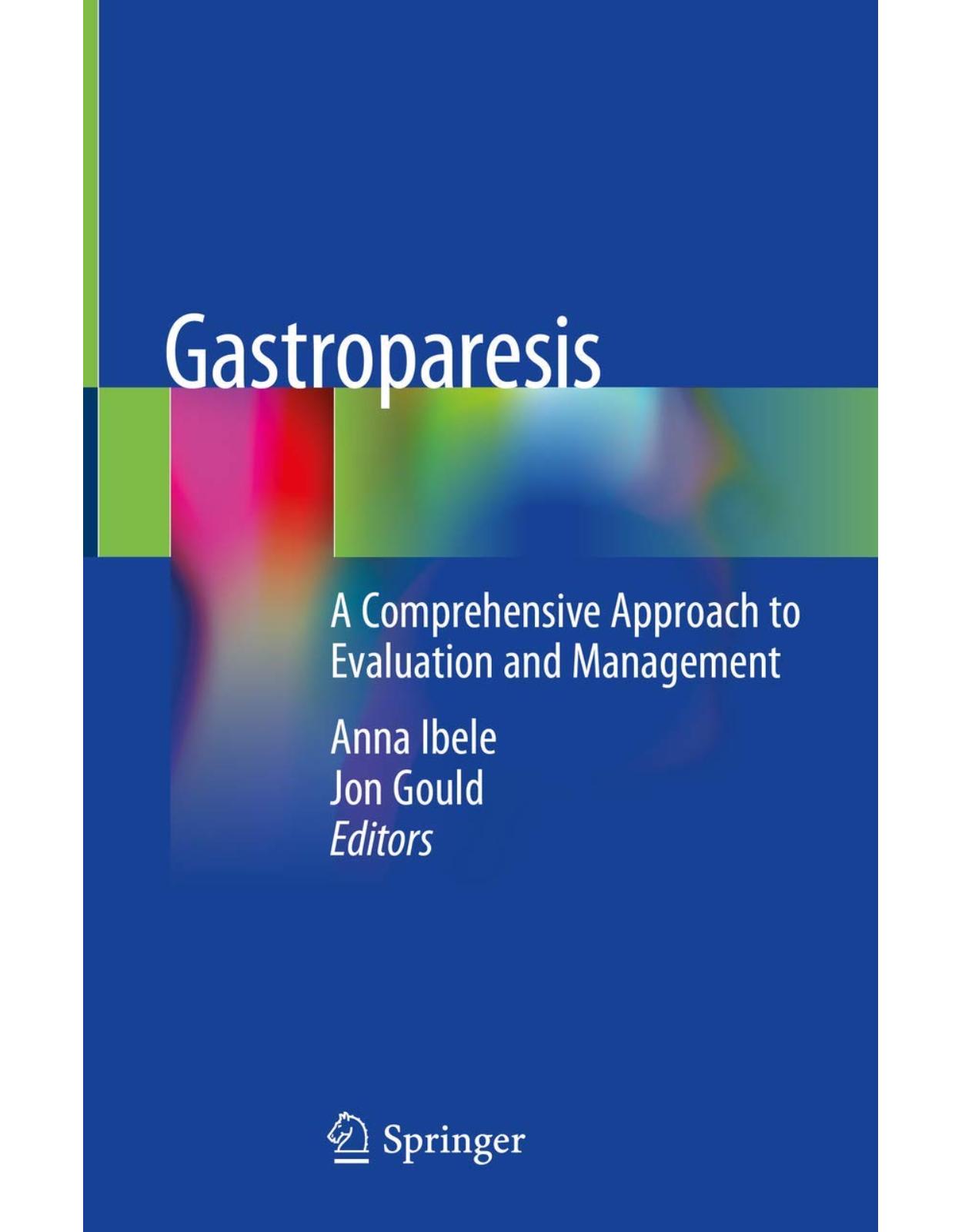
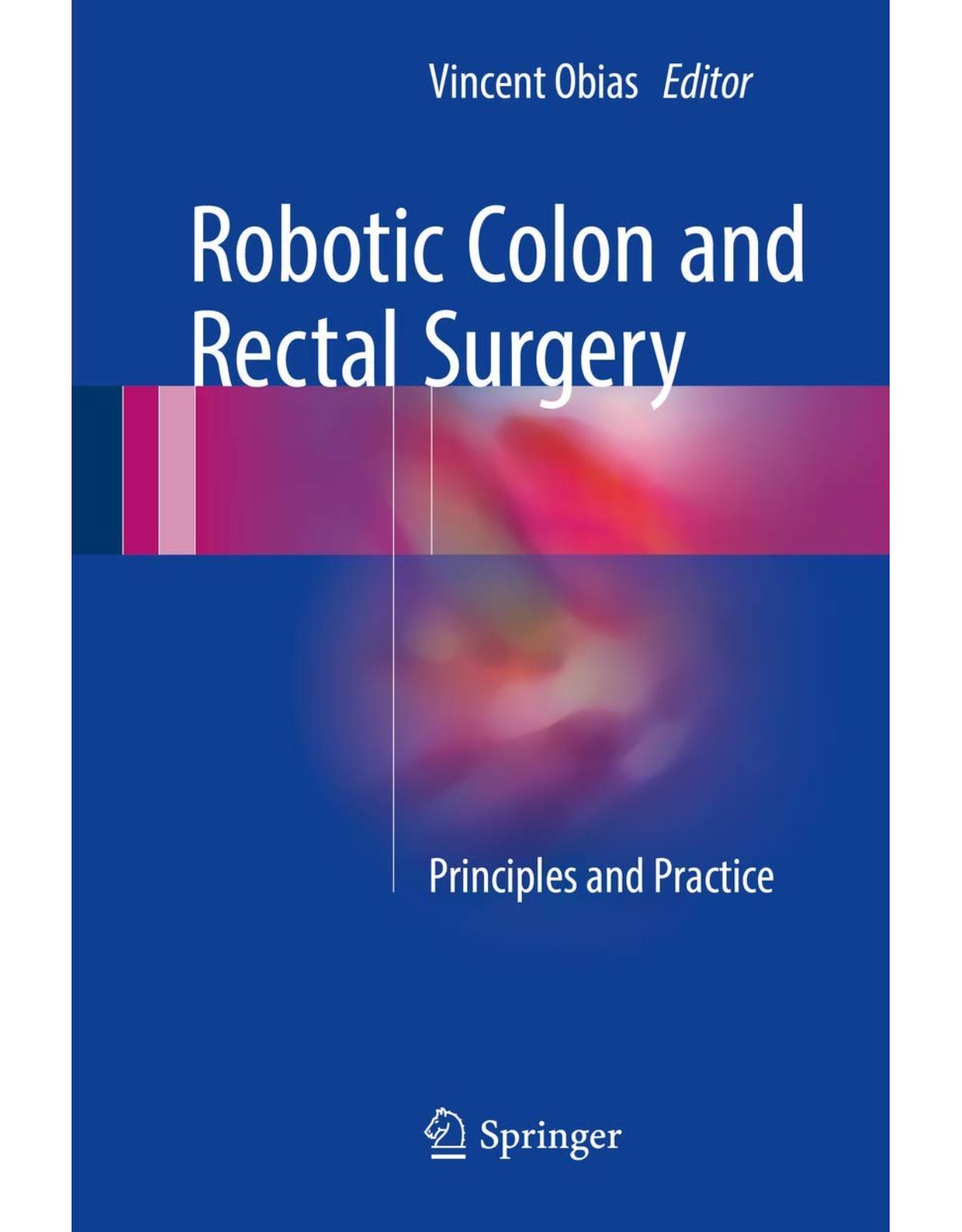
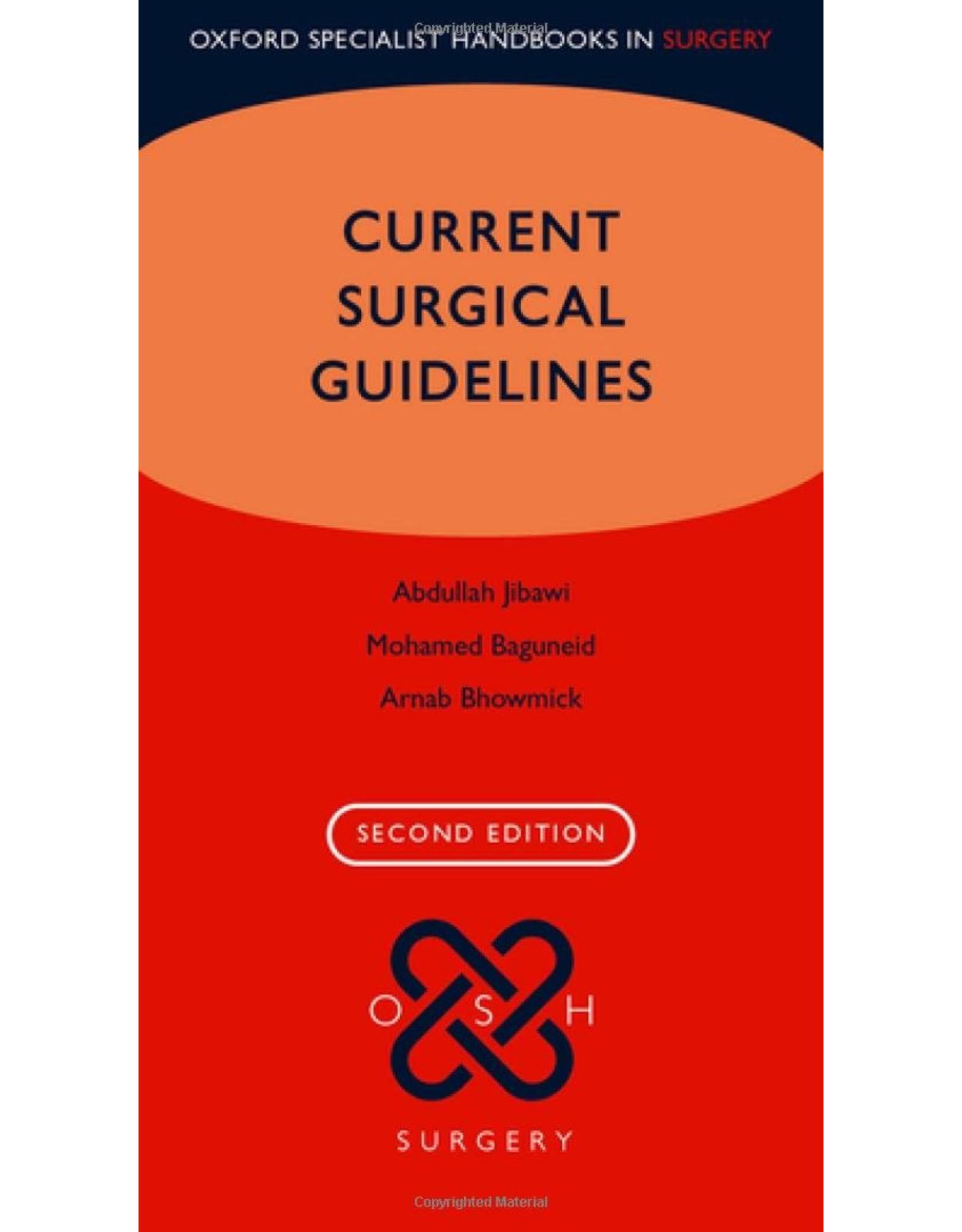
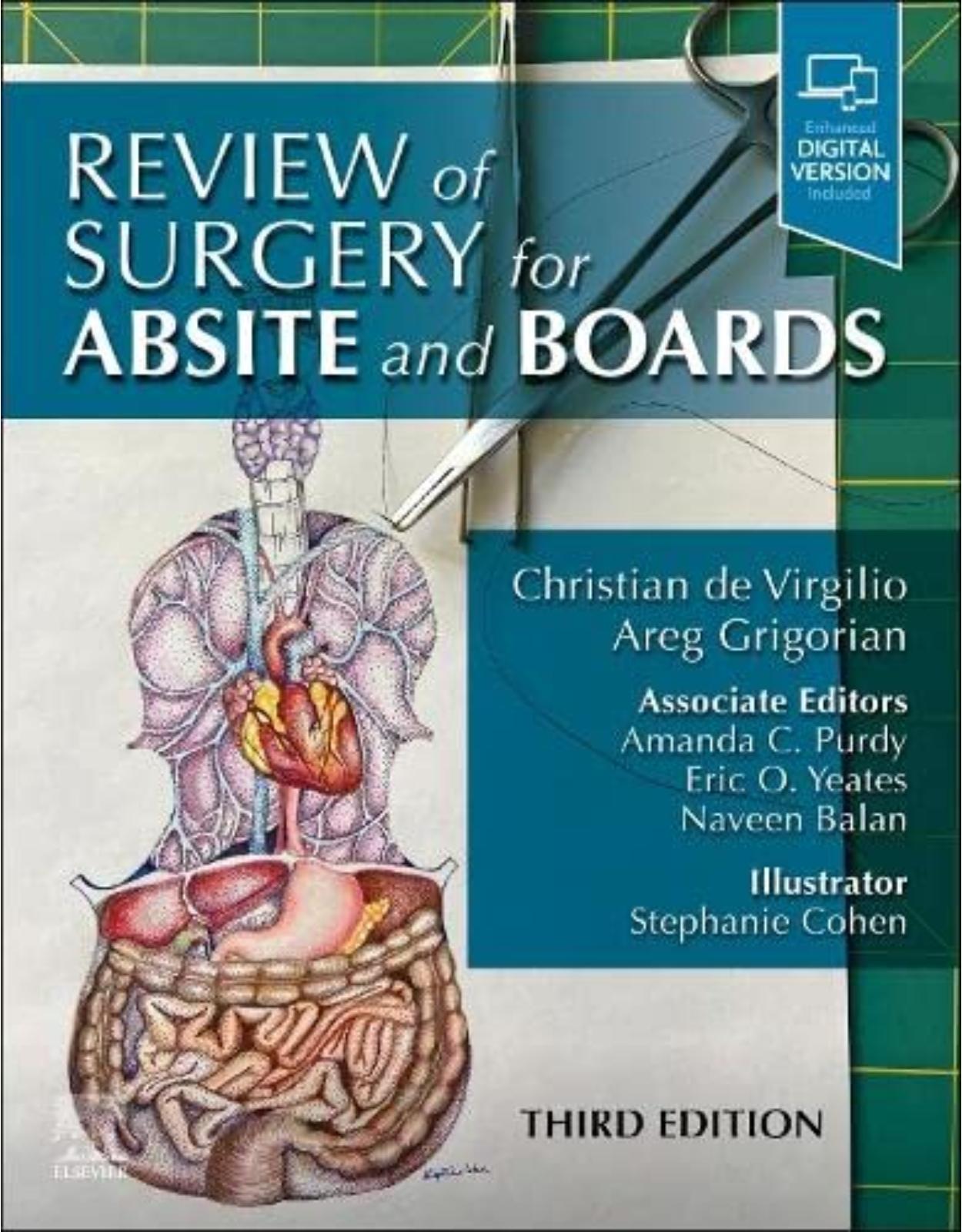
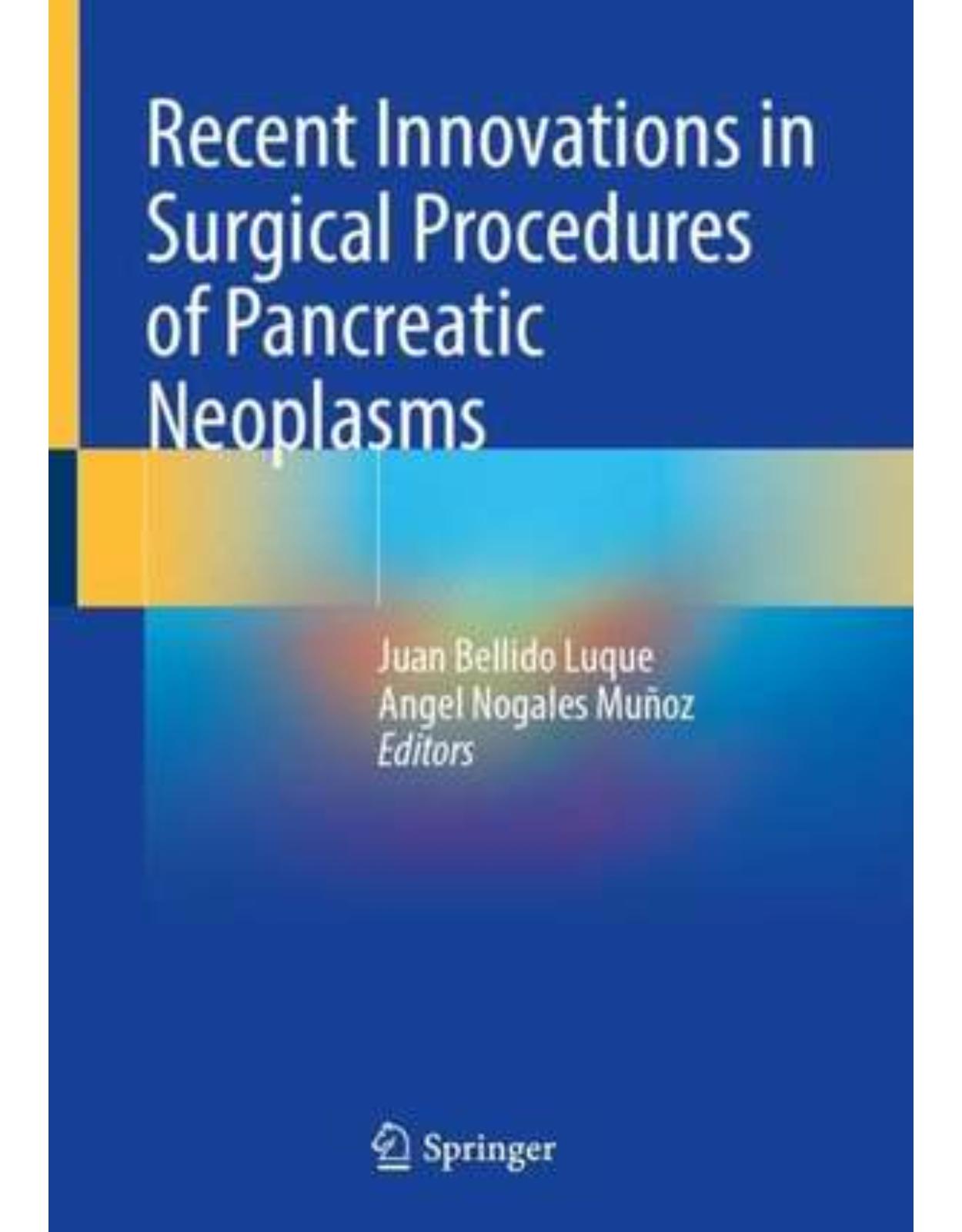
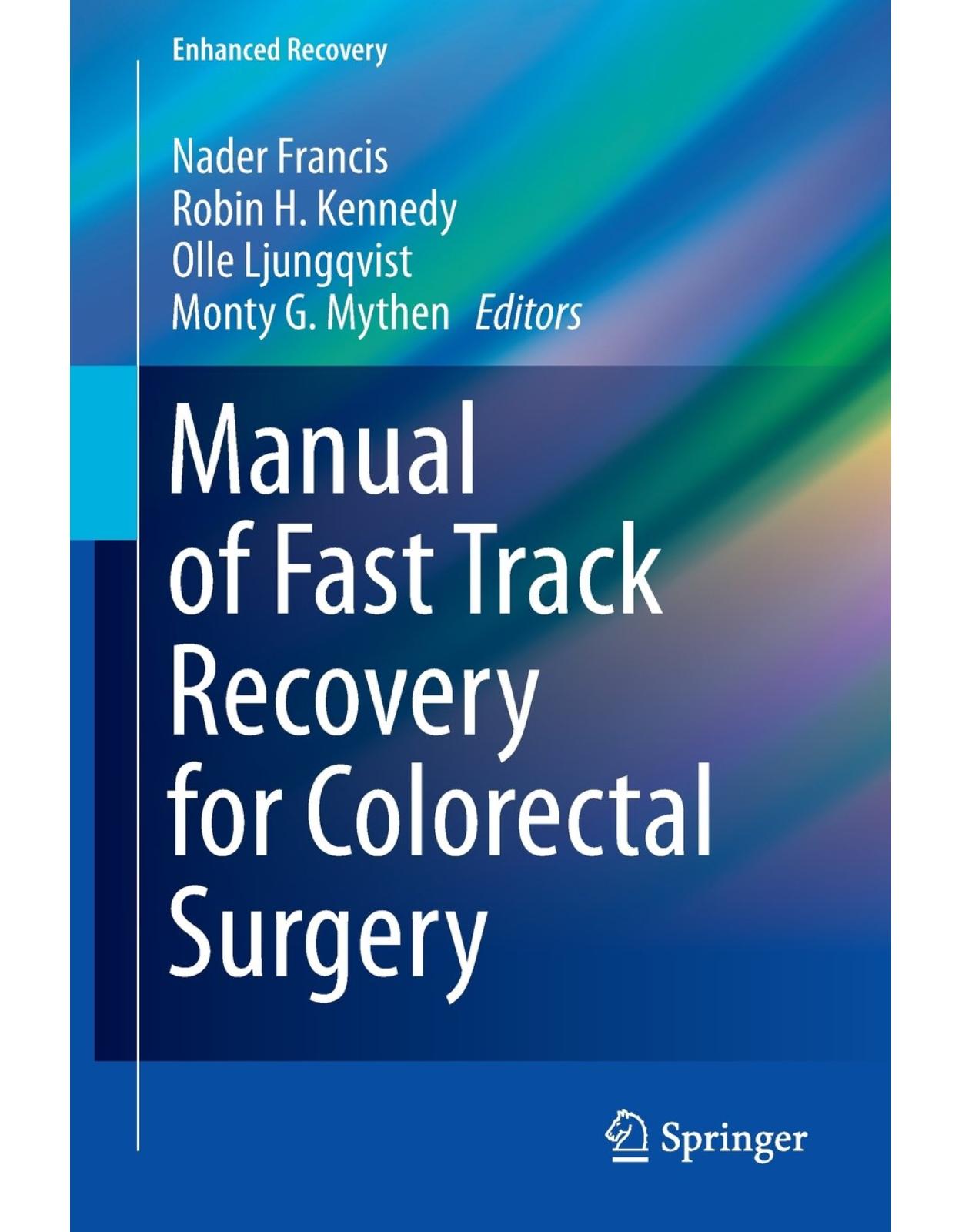
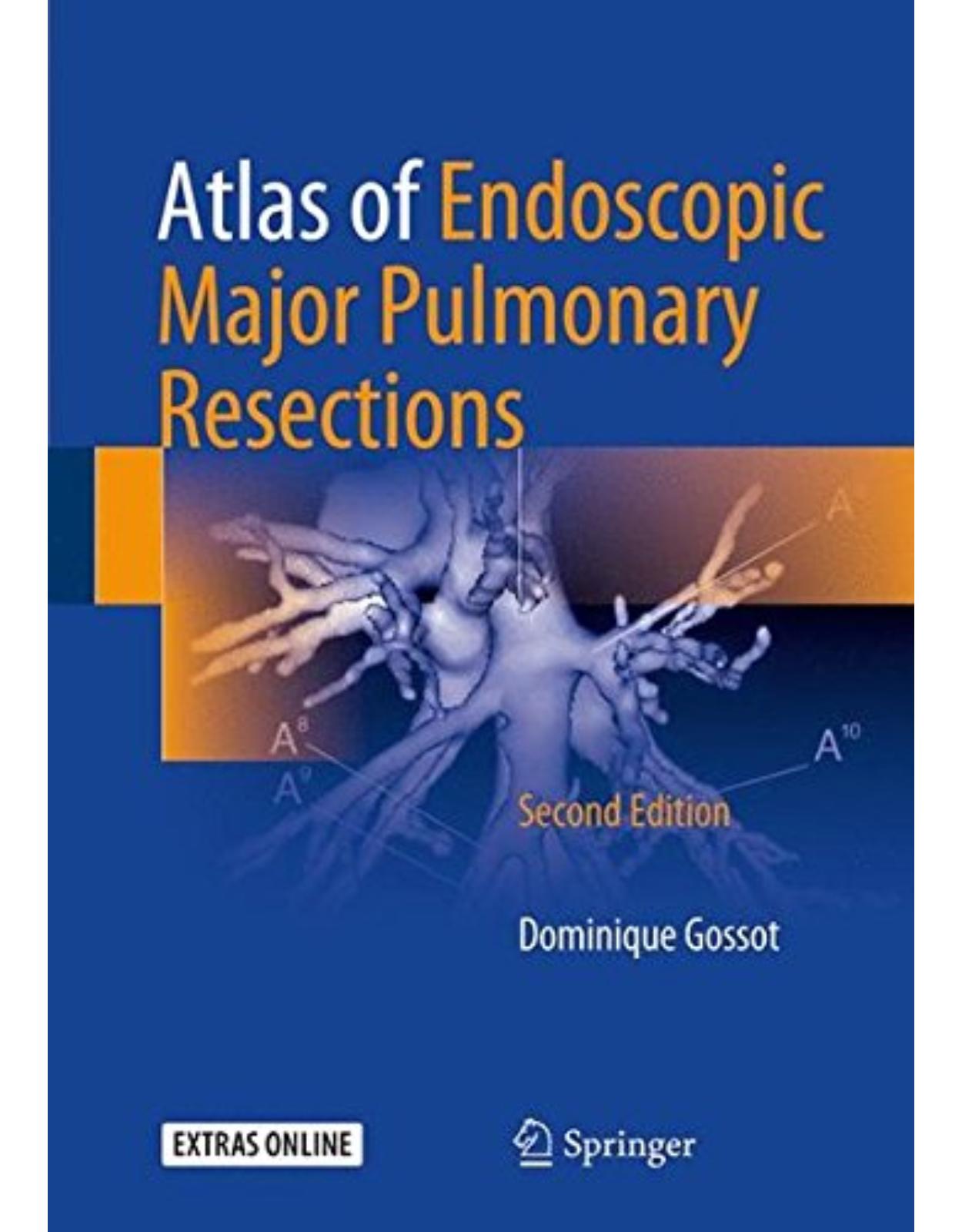
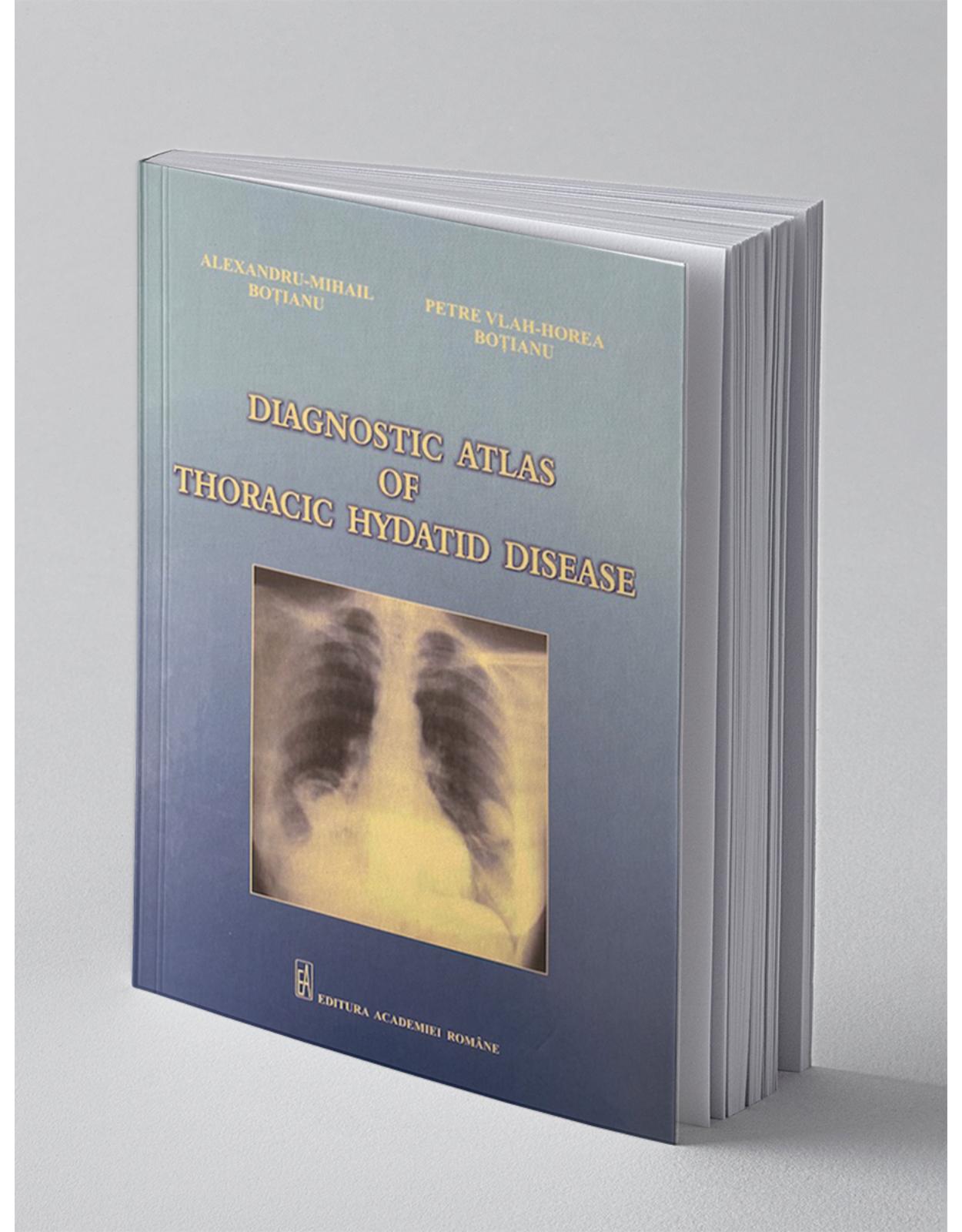
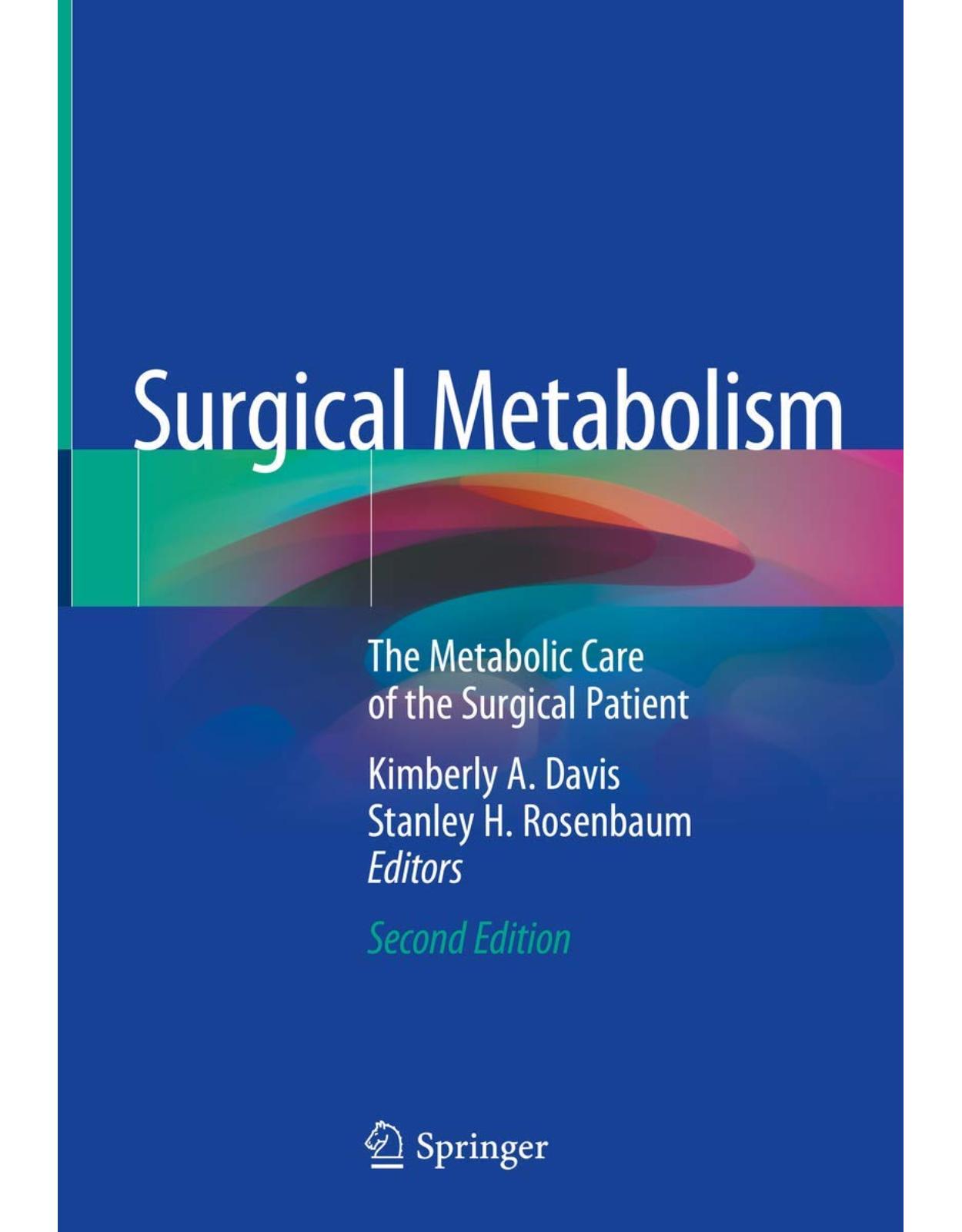

Clientii ebookshop.ro nu au adaugat inca opinii pentru acest produs. Fii primul care adauga o parere, folosind formularul de mai jos.